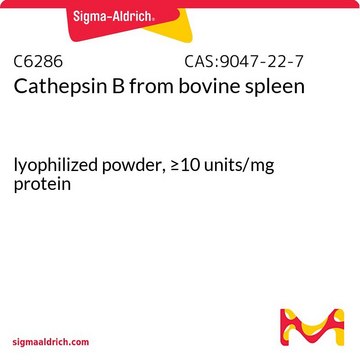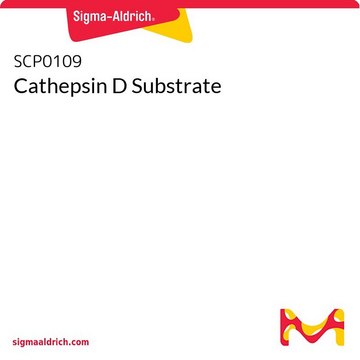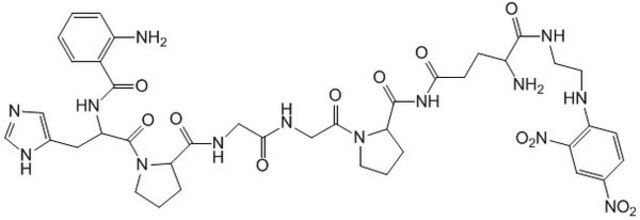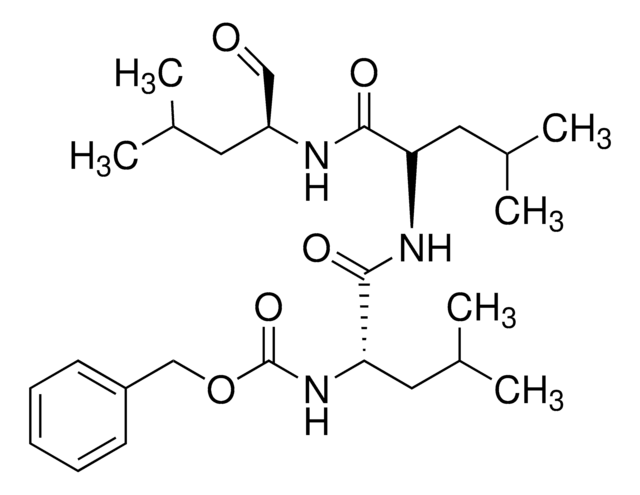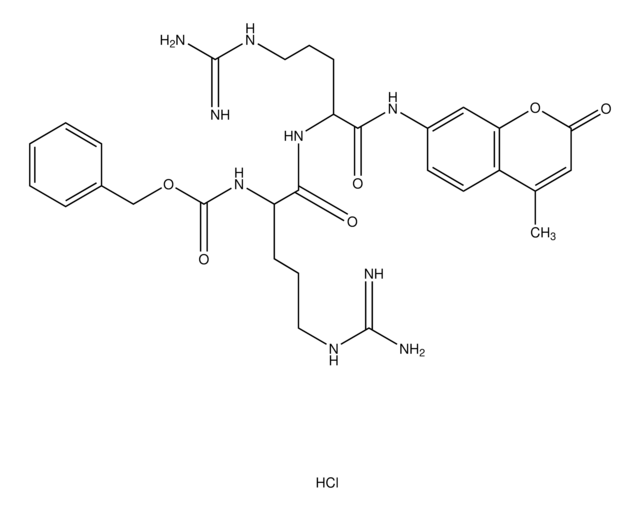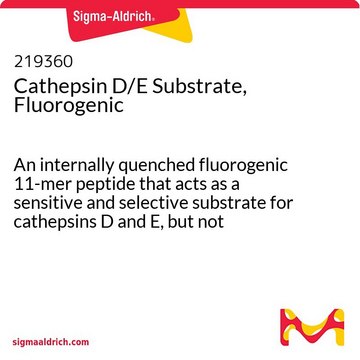219399
Cathepsin D Substrate I
Useful as a substrate for the determination of cathepsin D activity.
Sinónimos:
Cathepsin D Substrate I, Bz-RGFFP-4-MeOβNA, HCl
Iniciar sesiónpara Ver la Fijación de precios por contrato y de la organización
About This Item
Fórmula empírica (notación de Hill):
C49H55N9O7 · xHCl
Peso molecular:
882.02 (free base basis)
UNSPSC Code:
51111800
NACRES:
NA.77
Productos recomendados
Quality Level
assay
≥95% (HPLC)
form
lyophilized solid
manufacturer/tradename
Calbiochem®
storage condition
OK to freeze
desiccated
protect from light
color
white
solubility
DMSO: 5 mg/mL
fluorescence
λex ~345 nm
λem ~425 nm
shipped in
ambient
storage temp.
−20°C
General description
A useful substrate for colorimetric or fluorometric assay of cathepsin D activity. Cathepsin D hydrolyzes the Phe-Phe bond. Dipeptidyl aminopeptidase II is required to free the 4-methoxy-β-naphthylamine (4MβNA). Excitation max: ~345 nm; emission max: ~425 nm.
Useful as a substrate for the determination of cathepsin D activity. Suitable for either colorimetric or fluorometric assay. Cathepsin D hydrolyzes the Phe-Phe bond. Requires dipeptidyl aminopeptidase II to free 4-methoxy-β-naphthylamine (4MeOβNA).
Biochem/physiol Actions
Cell permeable: no
Primary Target
Substrate for the determination of cathepsin D activity
Substrate for the determination of cathepsin D activity
Product does not compete with ATP.
Reversible: no
Warning
Toxicity: Standard Handling (A)
Sequence
Bz-Arg-Gly-Phe-Phe-Pro-4MeOβNA, HCl
Other Notes
Takahashi, T., and Tang, J. 1981. Methods Enzymol.80, 565.
Smith, R.E., and Van Frank, R.M. 1975. in Lysosomes in Biology and Pathology4 (Dingle, J.T., and Dean, R.T., eds.) p. 193, American Elsevier, Holland.
Smith, R.E., and Van Frank, R.M. 1975. in Lysosomes in Biology and Pathology4 (Dingle, J.T., and Dean, R.T., eds.) p. 193, American Elsevier, Holland.
Legal Information
CALBIOCHEM is a registered trademark of Merck KGaA, Darmstadt, Germany
Storage Class
11 - Combustible Solids
wgk_germany
WGK 1
flash_point_f
Not applicable
flash_point_c
Not applicable
Certificados de análisis (COA)
Busque Certificados de análisis (COA) introduciendo el número de lote del producto. Los números de lote se encuentran en la etiqueta del producto después de las palabras «Lot» o «Batch»
¿Ya tiene este producto?
Encuentre la documentación para los productos que ha comprado recientemente en la Biblioteca de documentos.
Nuestro equipo de científicos tiene experiencia en todas las áreas de investigación: Ciencias de la vida, Ciencia de los materiales, Síntesis química, Cromatografía, Analítica y muchas otras.
Póngase en contacto con el Servicio técnico